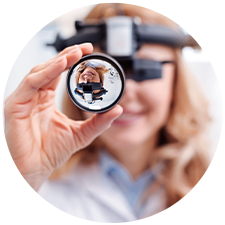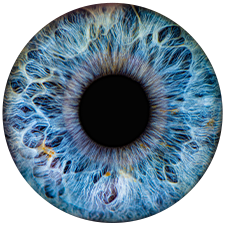Helping You Treat Dry Eyes
Dry eye can be a challenging condition to deal with—it can leave your eyes feeling irritated, sensitive, and watery, and we want to help you find relief.
For patients with dry eye, it can be difficult to focus on work or even wear contact lenses, and we want to help you overcome that. At Professional Eyecare Centers, we offer treatments such as OptiLIGHT by Lumenis, BlephEx, punctal plugs, meibomian gland expression, and more.
Our dry eye screenings are a part of all exams for adults and children, and we take the time to understand your needs. Don’t let dry eye slow you down—contact us to schedule your appointment today.
Book AppointmentHow Tear Production Contributes to Dry Eye
Dry eye can develop when your eyes aren’t producing quality tears, or your tears are evaporating too quickly.
Your tear film consists of 3 layers:
- The oily outer layer
- The watery middle layer
- The inner mucus layer
When the glands that produce these elements of your tears are not functioning properly or become inflamed, dry eye can occur. Inflammation can also occur from meibomian gland dysfunction (MGD).
MGD & Dry Eye
Meibomian gland dysfunction (MGD) is a common condition that affects the function of the meibomian glands, which are responsible for producing the oil layer of the tear film. When these glands become clogged or inflamed, they can’t produce enough oil to keep the tears from evaporating too quickly, leading to dry eye.
Symptoms of MGD can include dryness, grittiness, redness, and stinging sensations in the eyes.
Our Dry Eye Diagnostic Process
The diagnostic stage is an important step in the dry eye treatment process. We offer a variety of different diagnostic tests, including meibography, Schirmer’s test, subjective TBUT testing, and more.
Our goal is to get to the bottom of your dry eye symptoms, have you fill out a questionnaire, and determine if you need more in-depth treatment.
Meibography
Meibography is a noninvasive imaging technique used to visualize and assess the health of the meibomian glands. Any dysfunction or structural changes in these glands can lead to a reduction in oil production, resulting in faster evaporation of tears and increased dry eye symptoms.
A meibography helps us determine if meibomian gland dysfunction is the root cause of your dry eye.
Schirmer’s Test
Schirmer’s test is a helpful tool for checking the level of tear production in your eyes. By measuring the amount of tears produced over a specific period, we can determine if inadequate tear production contributes to your dry eye symptoms.
Subjective TBUT
Tear break-up time (TBUT) testing measures the time it takes for the tear film on the surface of the eye to break up. This test can be performed subjectively by a clinician or objectively using an automated device.
Subjective TBUT testing involves a clinician observing the tear film through a slit-lamp microscope and noting the time between blinking and the appearance of dry spots on the ocular surface.
Dyes/Staining
Dyes and staining techniques are commonly used for dry eye assessment. Fluorescein and lissamine green dyes are 2 common types used to evaluate the health of the ocular surface, including the cornea and conjunctiva.
These dyes are applied to the eyes so any damage or abnormalities on the surface of the eye can be seen by our team through a slit lamp microscope.
Common Symptoms of Dry Eye
Common symptoms of dry eye can include:
- Scratchy and uncomfortable eyes
- A stinging or gritty feeling in the eye
- Blurry, fluctuating vision
- A burning feeling or the feeling of something foreign in the eye
A comprehensive eye exam can help our team get to the bottom of your dry eye symptoms.
Our Dry Eye Treatment Options
Through the diagnostic stage and the screening process, our team works with you to find a treatment option that suits your needs and can help you find relief.
Your environment and other risk factors, such as exposure to dry air or wind, long-term contact lens wear, and digital eye strain, can increase the chances of dry eye development, and we take that all into account when determining which treatment is right for you.
OptiLIGHT by Lumenis
OptiLIGHT by Lumenis is a light-based, noninvasive treatment done in the area below the eyes to manage dry eye. The first and only IPL FDA-approved for dry eye management.
The treatment is safe, gentle, and is backed by more than 20 clinical studies.
OptiLIGHT uses precise pulses of light to reduce the inflammation that is typically associated with dry eye disease, improve tear break-up time, and increase meibomian gland functionality.
Meibomian Gland Expression
Meibomian gland expression is a noninvasive procedure that involves applying gentle pressure to the meibomian glands. Expressing the oil in your eyelids can help the quality and quantity of your tears improve, reducing dry eye symptoms such as irritation, fatigue, and watery eyes.
BlephEx
BlephEx is an in-office procedure that treats inflammation of the eyelids to provide much-needed relief. This inflammation can be caused by meibomian gland dysfunction and clogged oil glands.
BlephEx helps clean the accumulated bacterial biofilm and plaque along the edge of your eyelids and eyelashes to help unclog oil glands. The procedure lasts around 6 to 8 minutes, and you may feel a slight tickling sensation during treatment.
Punctal Plugs
Punctal plugs are small devices placed into tear ducts to block the drainage of tears, help keep your eyes moist, and prevent them from drying out too quickly.
Punctal plugs are a treatment method that can be effective in providing lasting relief from dry eye symptoms. Our team will work with you to determine whether punctal plugs are the right treatment option for your unique needs.
Drops, Sprays, & Eye Masks
Medicated eye drops such as RESTASIS may be an effective treatment option to relieve your dry eye discomfort.
Treatment methods aimed at your oil glands can help improve dry eye symptoms. These treatments can include warm compresses, eyelid massages, sprays, and eye masks.
Scleral Lenses for Dry Eye
Scleral lenses are designed to offer relief from dry eye symptoms by maintaining moisture in the eyes. Scleral lenses aren’t a cure for dry eye syndrome, but they are effective and well-tolerated in severe cases. They create a liquid bandage on the cornea, which can alleviate dry eye discomfort.
Scleral lenses can also be an excellent option for patients who may not be able to wear contact lenses due to issues such as keratoconus.
Providing Support Against Dry Eye
The whole team at Professional Eyecare Centers recognize how challenging dealing with dry eye can be. Our team offers the technology and expertise to help support you against dry eye. We are focused on helping you find relief.
Contact us to schedule your appointment and address the symptoms of dry eye today.
Book AppointmentOur Locations
Edgeley
- Phone: 701-493-2853
- Email: [email protected]
- 509 Main Street
- Edgeley, ND 58433
Hours
- Monday: Closed
- Tuesday: Closed
- Wednesday: Closed
- Thursday: Closed
- Friday: 9:00 AM – 4:30 PM
- Saturday: Closed
- Sunday: Closed
Ellendale
- Phone: 701-407-0256
- Email: [email protected]
- 105 Main Street
- Ellendale, ND 58436
Hours
- Monday: 1:15 PM – 4:30 PM
- Tuesday: Closed
- Wednesday: Closed
- Thursday: 9:00 AM – 4:30 PM
- Friday: Closed
- Saturday: Closed
- Sunday: Closed
LaMoure
- Phone: 701-800-5655
- Email: [email protected]
- 100 1st Ave N
- Lamoure, ND 58458
Hours
- Monday: 9:00 AM – 11:45 AM
- Tuesday: Closed
- Wednesday: 9:00 AM – 4:30 PM
- Thursday: Closed
- Friday: Closed
- Saturday: Closed
- Sunday: Closed
Valley City
- Phone: 701-845-5000
- Email: [email protected]
- 200 Central Ave N Ste. F
- Valley City, ND 58072
Hours
- Monday: 9:00 AM – 5:00 PM
- Tuesday: 9:00 AM – 5:00 PM
- Wednesday: 9:00 AM – 5:00 PM
- Thursday: 9:00 AM – 5:00 PM
- Friday: 9:00 AM – 5:00 PM
- Saturday: Closed
- Sunday: Closed
Carrington
- Phone: 701-652-2222
- Email: [email protected]
- 6712 Hwy 200 East
- Carrington, ND 58421
Hours
- Monday: 9:00 AM – 5:00 PM
- Tuesday: 9:00 AM – 5:00 PM
- Wednesday: 9:00 AM – 5:00 PM
- Thursday: 9:00 AM – 5:00 PM
- Friday: 9:00 AM – 5:00 PM
- Saturday: Closed
- Sunday: Closed
Jamestown
- Phone: 701-252-5000
- Email: [email protected]
- 210 10th Street SE
- Jamestown, ND 58401
Hours
- Monday: 9:00 AM – 5:00 PM
- Tuesday: 9:00 AM – 5:00 PM
- Wednesday: 9:00 AM – 5:00 PM
- Thursday: 9:00 AM – 5:00 PM
- Friday: 9:00 AM – 5:00 PM
- Saturday: By Appointment Only
- Sunday: Closed
Our Brands











